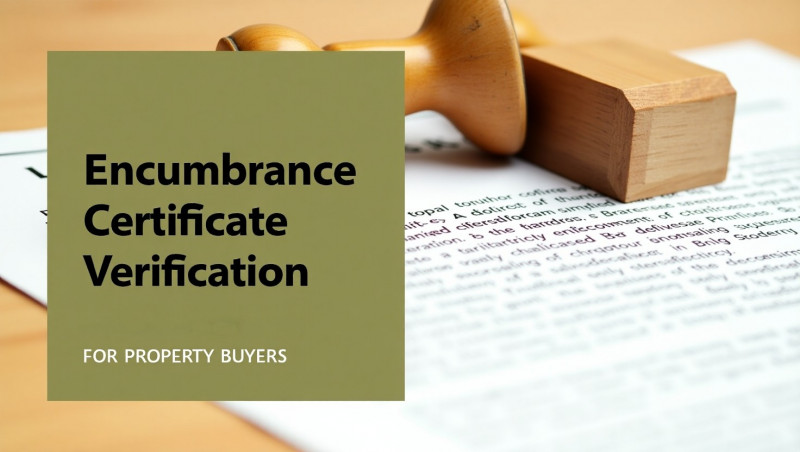- May 16, 2025
-
Encumbrance Certificate Verification:
A Must-Know Guide for Property Buyers
Buying a property is a big move—financially, emotionally, and legally. Amid all the excitement, don’t overlook one of the most important parts of the process: verifying the Encumbrance Certificate (EC). Whether you’re buying land, a house, or commercial property, checking the EC can help you avoid legal headaches and secure a safe, clean deal.
Let’s break it all down in simple terms.
What is an Encumbrance Certificate (EC)?
An Encumbrance Certificate is an official document issued by the Sub-Registrar Office that states whether a property carries any legal or financial liabilities.
The EC reveals:
- 🏦 Loans or mortgages taken on the property
- ⚖️ Court attachments or legal disputes
- 🔄 Sale or ownership transfer history
✅ An EC with no liabilities means the property is legally clean and ready to purchase.
Why EC Verification is So Important
Skipping EC verification is like buying a car without checking its papers. Here’s what could go wrong if you don’t verify it:
🚫 Risks of Ignoring EC:
- You might unknowingly buy a mortgaged property
- There could be disputed ownership
- Banks may reject your home loan application
- Future resale or registration could be blocked
Verifying the EC helps you avoid fraud and safeguards your investment.
Verification of EC in Tamil Nadu
Whether online or in person, verifying an EC is easy if you follow the right steps.
✅ Step 1: Visit the Official Portal
Head to the Tamil Nadu Registration Department’s e-Services site:
🖥️ What to Do:
- Click on "Encumbrance Certificate" under the "E-Services" menu
- Select "View EC" option
- Enter:
- Zone and Sub-Registrar Office
- Survey number, document number, or plot details
- Period for search (e.g., 1970–2024)
🔐 A broader search period ensures a complete ownership and mortgage history.
✅ Step 2: Review the EC Details Online
You’ll be shown a PDF of the EC containing:
- All property transactions
- Sale deeds, gift deeds, mortgages, or leases
- Names of parties involved
- Document numbers and dates
🧠 Double-check the names, transaction dates, and plot boundaries.
✅ Step 3: Visit the Sub-Registrar Office
(Optional but Recommended)
Even if you’ve downloaded the EC online, consider visiting the concerned Sub-Registrar Office to:
- Cross-verify the physical record
- Get a certified hard copy (useful for loan applications or legal purposes)
- Compare with parent documents or sale deeds
🔍 This adds an extra layer of assurance, especially for high-value or disputed properties.
✅ Step 4: Validate the Digital EC Certificate
Modern ECs come with:
- Digital seal or QR code
- Serial number for verification
- Tamper-proof watermark or digital signature
Cross-check the EC with:
- Your sale deed or title deed
- Survey number/FMB sketch
- Patta or tax receipts
📁 All details must align perfectly. Any mismatch could point to ownership disputes or clerical errors.
🛡️ Key Things to Look for in an EC
When reviewing your Encumbrance Certificate, make sure to look for:
⚠️ Common Red Flags in an EC
If you spot any of the following, proceed with caution—or better, consult a legal expert:
- Property still mortgaged to a bank
- Owner name mismatch
- Court orders, legal attachments, or auction notices
- Missing transactions that should appear in the history
📝 Final Checklist Before You Close the Deal
Final Thoughts: No EC, No Deal!
An Encumbrance Certificate is more than just a piece of paper—it’s your proof of peace of mind. Never finalize a property transaction without verifying this document. Whether you’re buying your dream home or investing in a plot, make EC verification your top priority.
🔍 For official EC search and download, visit: https://tnreginet.gov.in/


Comments :
Currently, there are no comments in this post. Be the first person to comment on this post.